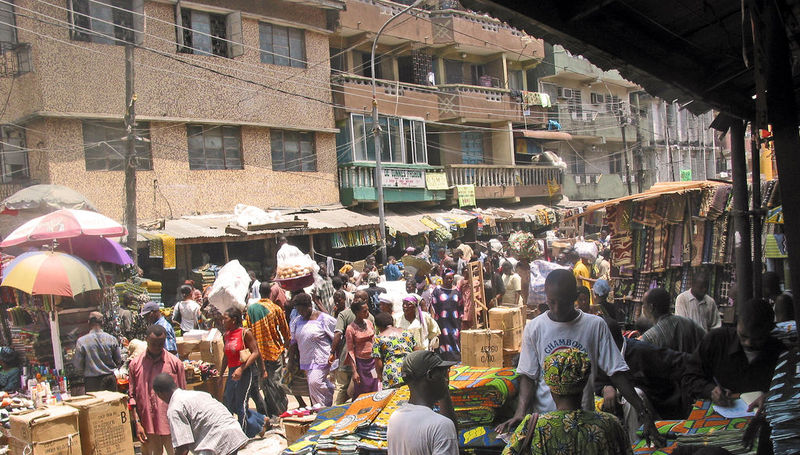Nigeria’s population statistics are scary and future projections are frightful. It was 140m at the last count in 2016, it has climbed to 200m in 2019 and expected to double to about 400m by 2050, no thanks to a high fertility rate of between 2.5% and 2.5%. A global site demographic site Worldometers.info, puts the national population at 203,021,855 as of November 25, equivalent to 2.61% of the total world population, ranking it the highest in Africa and 7th globally.
Nigeria’s population has been rising in leaps and bounds, and this was not matched with economic growth, exacerbating poverty in the progress. At independence in 1960, Nigeria’s population was 45m, 55m in 1970, 73m in 1980, 95m in 1990, 122m in 2000, 158m in 2010, and now above 200m. Nigeria’s population at the present growth rate is expected to shoot to 262m by 2030, 329m by 2040. In 2050, Nigeria population will rise to 401m displacing United States and China as the third most populous country in the world.
The average population density is widely believed to be over 200 people per kilometre out of which Lagos has the highest population density of about 2607 people according to 2006 census. It is also predicted by 2050, 77 percent of Nigeria’s population will be urban, up from the current 51% residing in mega cities such as Lagos, Benin, Kano, Abuja, Port Harcourt, Ibadan, and Sokoto.
Just as corruption is a national signpost, Nigerians are also very fertile reproducing. Birth rates that was 1.9% in 1960 rose to 2.6% in 2019. Every second, the nation records four births, adding about 20,000 Nigerians to the landmass every day.
Are poor people more prolific in reproducing? This seems to be the case, when one considers that countries with the highest fertility rates in the world are all in Africa- the poorest continent. Niger, one of the poorest countries in the world leads the pack, followed by war-torn Somalia, Democratic Republic of Congo, Mali, Chad, Angola, Burundi, Uganda, and Nigeria.
Ironically, the lowest fertility rates are in developed countries such as South Korea, Spain, Japan, and United States where households have relatively higher disposable incomes. In several countries of the North, death rates have outpaced birth rates, national population are shrinking, and towns in Spain are become desolate due to low population.
The fastest shrinking population according to United Nations are in Eastern Europe-Bulgaria, Latvia, Moldova, Ukraine, Croatia, Lithuania, Romania, Serbia, Poland, Hungary. The population are expected to shrink by 15% or more by 2050.
Why is Nigeria’s population rising sporadically over the years? Reasons include cultural factors that support early marriages, preference for male child causing continuous procreation in search for a boy, extended family system that encourages large families, and traditional expectations for child bearing; religious beliefs that support polygamy and prohibits contraception even among married and encourages dependence on God rather than personal incomes to sustain families; low literacy rates negatively affecting uptake of sex education, population education, health education and reproductive health education; and economic factors fostering dependence on children for old age security.
Nigeria is a big child factory and the girl child is the greatest victim. girlsnotbrides.org/ campaign in Nigeria reports ‘that 44% of girls in Nigeria are married before their 18th birthday and 18% are married before the age of 15. According to UNICEF, Nigeria has the third highest absolute number of child brides in the world – 3,538,000 – and the 11th highest prevalence rate of child marriage globally. Child marriage is most common in the Northwest and Northeast, where 68% and 57% of women aged 20-49 were married before their 18th birthday. Child marriage is particularly common among Nigeria’s poorest, rural households and the Hausa ethnic group. A 2017 World Bank study estimates that child marriage costs Nigeria USD7.6 billion in lost earnings and productivity every year’.
The crux of the problem is that national, state, and local governments have not been able to match provision of social services such as health, education, water, and housing and infrastructure development such as roads, railways, and energy with increasing population growth due to inadequacy of funds, poor governance, and graft. Nigeria’s rising population has been marked with low economic growth and decaying social services and infrastructures thereby under developing Nigeria.
A large population is not necessarily a development challenge if its productive with low mortality. Nigeria’s rising population is not productive and the resources available cannot cope with the numbers on ground even if shared more equitably. The median age of Nigeria’s population is between 18-19, implying most Nigerians are youths in school, out of school, or unemployed.
A school of thought, however, argues that Nigeria’s problem is not its population size as it is blessed with natural resources adequate to sustain a good standard of living if the society is egalitarian and welfarist and funds are used for the good of the greatest number. While this is true, the reality is that developed countries are working to control their population despite their enormous economic resources.
Nigeria’s first population policy was developed in 1988 during the military administration of General Ibrahim Babangida with late Professor Olikoye Ransome Kuti as Minister of Health. Its principal provisions were to ’ reduce the number of children a woman is likely to have during her lifetime, now over six, to four per woman by 2000 and and ‘reduce the present rate of population growth from about 3.3 per cent per year to 2.5 per cent by 1995 and 2.0 per cent by the year 2000″
The revised edition National Population Policy for Sustainable Development (NPP) 2004 seeks to achieve a reduction of the National population growth rate to 2 percent or lower by the year 2015 amongst others. All these lofty declarations were not respected, and targets were missed.
A 2016 study by Professor R. Murdi and Dr S Darkyes of the University of Abuja reveals ‘that 69.6% of the population have large family size of six and above’, listing factors militating against fertility decline to include among others, poor dissemination of national population policies creating lack of awareness on the policy by most of the population, religious prohibition, occupation especially farming that requires large family size, level of education as well as income level of the population.
The way forward is for Nigeria’s three tier of governments to see its spiralling population as a national challenge and address it as such. We cannot successfully tackle and overcome poverty if we continue to proliferate like rabbits. Governments of developed countries with low fertility rates give incentives to encourage early marriage before 30 years and childbearing, likewise, we should adopt the same approach in the reverse version. There should be benefits for raising small families and penalties for raising large families. Nigeria should understudy how countries such as Russia, Hungary, Estonia, and China are achieving negative growth rates, and imbibe lessons.
Government should no longer pay a lip service to population control programmes. A national emergency should be declared on Nigeria’s rising population and all hands should be on deck to seriously stem the tide.
Agencies saddled with implementing national population polices such as the National Council on Population Management (NCPM), National Council on Population Management (NCPM), and Population Technical Working Group (PTWG) should be strengthened technically and financially to enable them effectively discharge their statutory roles. Capacity of state and local governments agencies should be built with enough financial resources and manpower to implement health, education, religious, and gender provisions in population issues.
The traditional and mass media should be harnessed in creating conducive attitudes supporting implementation of population programmes. Nigerians should realise that there is nothing fanciful being labelled as Africa’s most populous country, whereas its huge population is a liability living in poverty rather than an asset. The ‘most populous nation’ tag should cease to be a national pride. It is no good being big for nothing.
Source: thenationonlineng




